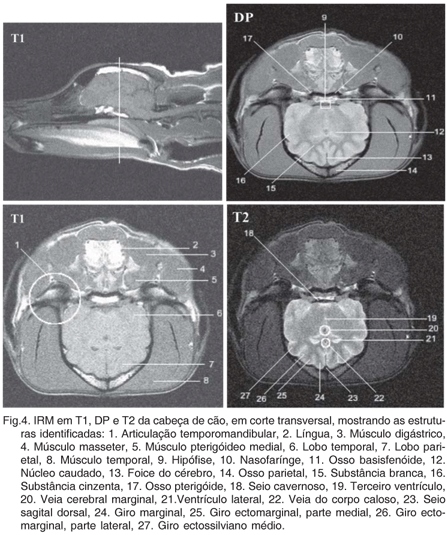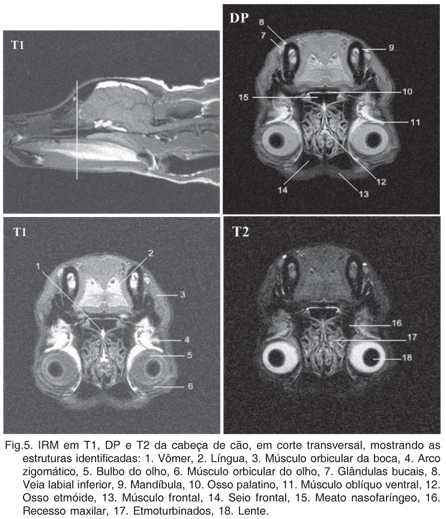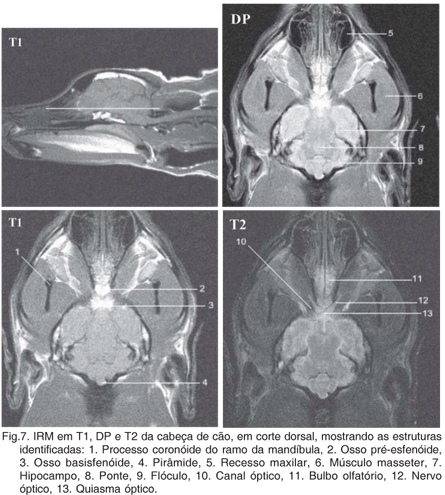Magnetic resonance imaging (MRI) is the most sensitive method of diagnostic imaging to evaluate soft tissues, specially the brain, however it is expensive. The method is based on the nuclear magnetic resonance phenomenon that occurs when atomic nucleus with magnetic proprieties in the body are submitted to a strong magnetic field, and excited with radio frequency generating a radio frequency signal captured by a receptive antenna. The signal is processed by Fourier Transform for the image formation. This study had the objective to obtain 10 complete exams of heads in cadavers of normal dogs to MRI and to make an Atlas of head structures. The images were obtained with a magnetic resonance unit Gyroscan S15/HP Philips using a magnetic field of 1,5Tesla. The cadavers were positioned with the head into a human head coil and submitted to sagittal slices used to plan transverse and dorsal slices in T1, T2 and DP spin-echo sequences. In T1 we adjusted TR=400ms and TE=30ms, in T2 TR=2000ms and TE=80ms and in DP TR=2000ms and TE=30ms. The slice thickness was 4mm, the number of averages 2, the matrix 256x256, the factor 1,0 and the field of view 14cm. The duration of the complete exam of the head was 74,5minutes. The images obtained with the described sequences and with the human head coil was of good quality. In T1 fat was hyperintense and fluid was hypointense. In T2 fat was less hyperintense and fluid was hyperintense. The cortical bone and the air were hypointense in all sequences used because of the low proton density. The DP sequence showed the best contrast between white and gray matter when compared with T2 and T1 sequences. Distinction of cerebral sulcus and gyrus was possible because T2 showed the cerebrospinal fluid. The identification of bone structures that compound the region, muscles, main venous and arterial vessels and structures of the central nervous system, besides elements of the digestory and respiratory systems and structures of the eyes among others was possible through contrast obtained with MRI. In this study the MRI acquired in T1, DP and T2 were complementary for the anatomic study of the head and been able to demonstrate the structures of the canine head with rich anatomic details. The time used to do the complete exam of the head is compatible with the use in live animals since properly anesthetized and controlled. We had opened a way for the study of live animals and for the beginning of disease investigation, mainly that of neurologic origin because this technique is excellent for brain visualization.
MRI; brain; canine species; animal anatomy








